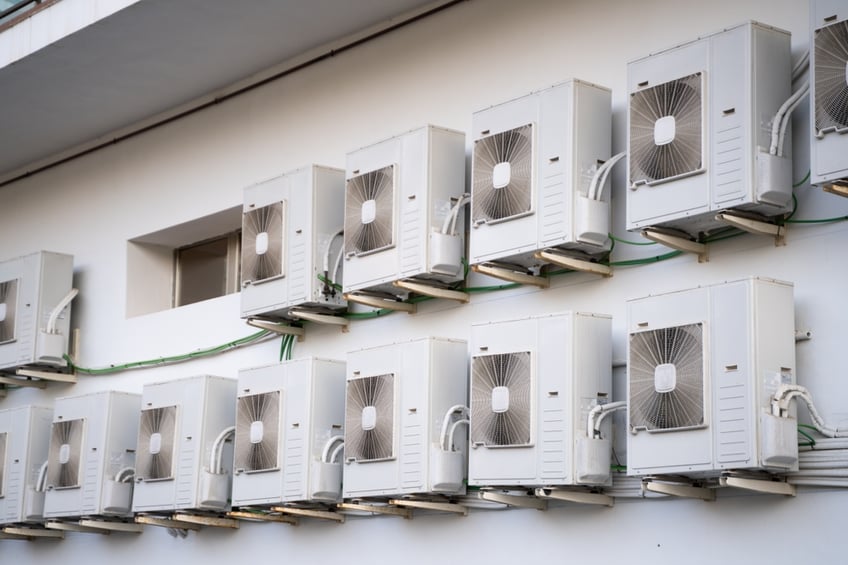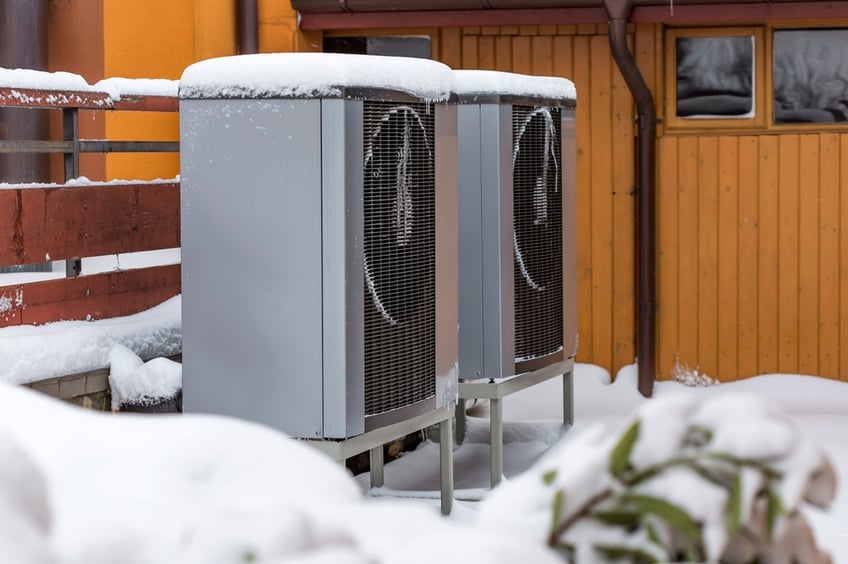ENERGY STAR Air Conditioners and Heat Pumps: 2023 Efficiency Requirements

The US Department of Energy introduced the new M1 testing procedure for air conditioners and heat pumps. The new procedure increases the static pressure from 0.1 to 0.5 inches of water, and this affects performance of HVAC equipment during the test. Energy efficiency ratings determined with the new test now use the SEER2/ EER2/ HSPF2 nomenclature, to tell them apart from efficiency ratings determined with the previous standard (SEER / EER / HSPF).
Considering a new construction project? Get an energy efficient HVAC design and qualify for tax credits.
The new HVAC testing procedure and the SEER2 / EER2 / HSPF2 ratings came into effect in January 2023. The certification requirements for ENERGY STAR air conditioners and heat pumps have also changed, since their efficiency is now defined with the new ratings. The US Environmental Protection Agency has updated the key product criteria with the new ratings.
ENERGY STAR Certification Requirements: Minimum SEER2, EER2 and HSPF2 Values

ENERGY STAR appliances offer above-average energy performance, which means that their certification requirements exceed federal standards. Increased efficiency requirements for HVAC equipment were introduced along with the new efficiency ratings, and the ENERGY STAR program has also raised the bar accordingly.
The following tables summarize the ENERGY STAR requirements for central air conditioners and heat pumps. These requirements apply for HVAC equipment below 65,000 BTU/h of capacity, covering both split systems and packaged units. The ENERGY STAR Certification is not available for central air conditioner and heat pumps using three-phase electric power, or having a capacity above 65,000 BTU/h.
2023 ENERGY STAR Requirements for Central Air Conditioners
|
Air Conditioner Type |
ENERGY STAR Minimum Efficiency Requirement |
|
Split system |
15.2 SEER2 and 12.0 EER2 |
|
Packaged system |
15.2 SEER2 and 11.5 EER2 |
2023 ENERGY STAR Requirements for Conventional Heat Pumps
|
Heat Pump Type |
ENERGY STAR Minimum Efficiency Requirement |
|
Split system |
15.2 SEER2, 12.0 EER2, 7.8 HSPF2 |
|
Packaged system |
15.2 SEER2, 11.5 EER2, 7.2 HSPF2 |
2023 ENERGY STAR Requirements for Cold Climate Heat Pumps
|
Heat Pump Type |
ENERGY STAR Minimum Efficiency Requirement |
|
Split system |
15.2 SEER2, 11.0 EER2, 8.5 HSPF2 |
|
Packaged system |
15.2 SEER2, 10.6 EER2, 8.1 HSPF2 |
We recently published another article that covers the minimum federal efficiency requirements for air conditioners and heat pumps based on the new SEER2 / EER2 / HPPF2 ratings. These minimum ratings apply for all products sold in the US, and they are less stringent than ENERGY STAR requirements.
What is the Definition of a Cold Climate Heat Pump?

Air-source heat pumps that meet the following conditions are considered cold climate heat pumps under the ENERGY STAR program:
- At least 1.75 Coefficient of Performance (COP) when operating at 5°F.
- Delivering at least 70% heating capacity at 5°F (compared with 47°F).
- Controls verification procedure: Demonstrate that the equipment can achieve 1.75 COP and 70% heating capacity at 5°F in a customer’s home using native controls.
Gas/electric packaged heat pumps cannot be designated as cold climate heat pumps, even if they meet the performance requirements listed above.
New Federal Tax Credits for ENERGY STAR Air Conditioners and Heat Pumps
The US government introduced new tax credits for HVAC equipment in January 2023. Air-source heat pumps and central air conditioners are eligible for the following incentives:
- Air-source heat pump: 30% of costs up to $2,000
- Central air conditioner: 30% of costs up to $600
ENERGY STAR Certification is mandatory for the tax credits, and additional requirements apply for some equipment types. In the case of air conditioners, all ENERGY STAR packaged systems qualify for the 30% tax credit, but split systems only qualify if they have at least 16 SEER2 efficiency. The requirements for heat pumps are a bit more complex:
- Ducted heat pump (not cold climate): All ENERGY STAR models qualify.
- Ducted cold climate heat pump: At least 10 EER2.
- Mini-split heat pump (not cold climate): At least 16 SEER2, 12 EER2, 9 HSPF
- Mini-split cold climate heat pump: At least 16 SEER2, 9 EER2, 9.5 HSPF
Other types of ENERGY STAR equipment that are eligible for the new tax credits include boilers, biomass fuel stoves, furnaces, heat pump water heaters, combustion water heaters, insulation, windows, skylights, exterior doors and electric panels.

Michael Tobias
Michael Tobias, the Founding Principal of NY Engineers, currently leads a team of 150+ MEP/FP engineers and has led over 4,000 projects in the US
Join 15,000+ Fellow Architects and Contractors
Get expert engineering tips straight to your inbox. Subscribe to the NY Engineers Blog below.

